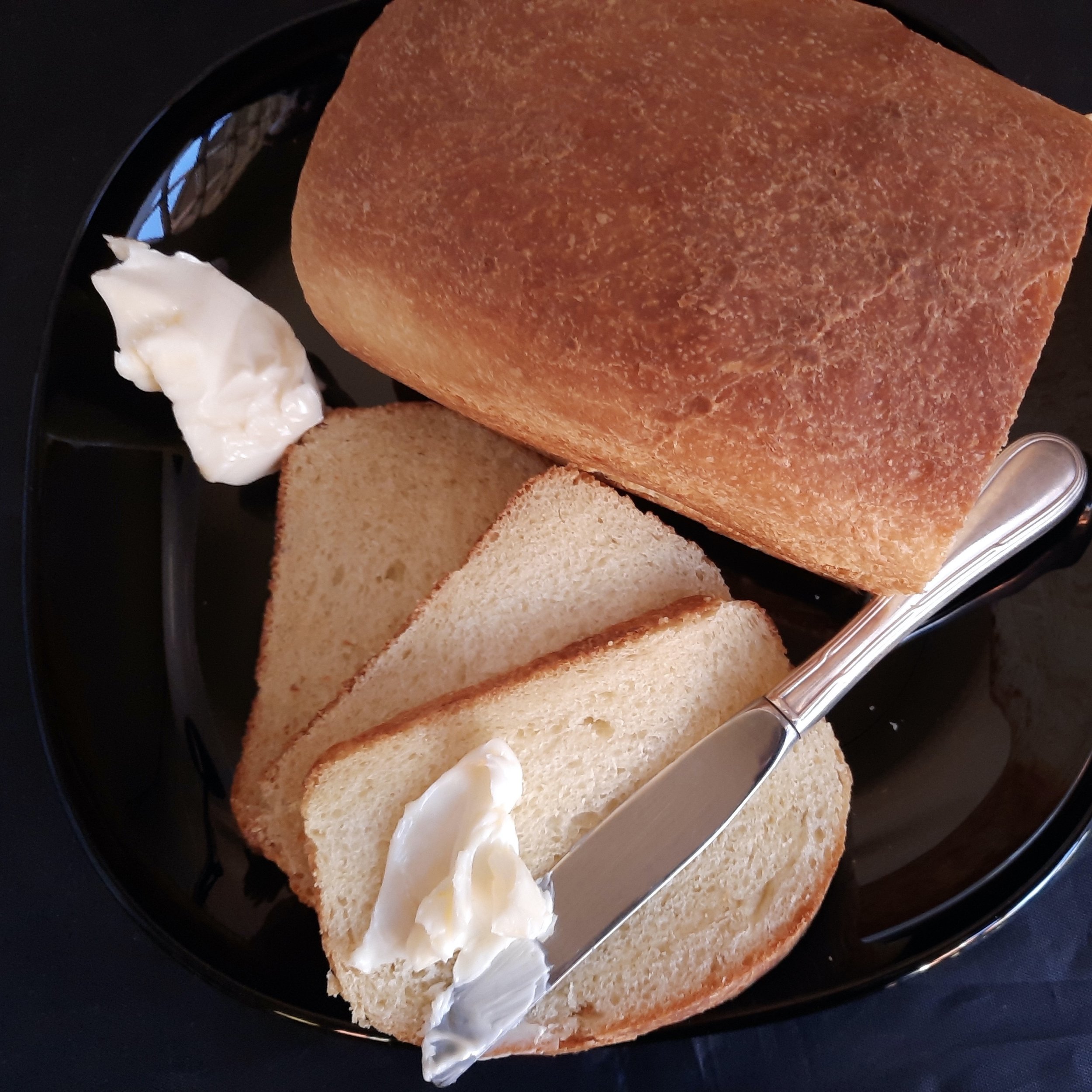BUTTER
What a wonder of a fat butter is! What a wonder of a fat butter is! Incomparable in taste and texture, in any kitchen it anoints whatever it is spread upon, melted into or coats. (Indeed, the ancient Greeks prized it as an ointment, not a cooking fat.)
Butter is a churning of the cream of milk (primarily of the beef cow, but also of the goat, sheep and other female mammals) which cream is around 40 percent fat. Cream is an oil-in-water emulsion at the ratio of 0.7:1, fat-to-water. Churned cream—butter—rearranges the fat into a water-in-fat emulsion with a fat-to-water ratio of 5.7:1. A very arithmetic, even sterile, way to explain its luxuriousness, its final approximation of 80 percent fat.
This new ratio of fat to water makes butter, in the words of the food scientist Harold McGee, “a sauce waiting to be made.” A cook is able to take as little as 1 tablespoon of liquid (wine, vinegar, jus, juice, even plain water) and incorporate into it a nearly unlimited amount of butter—but let’s say a full stick (or 8 tablespoons) will do for close to maximum pleasure—and “monter,” as French cooks have it, the juices of a sauté pan into another order of deliciousness. Or make a beurre blanc to dress any sort of vegetable or fish.
Even overcooked into a “beurre noisette” (“nutty butter”), wherein butter’s milk solids and proteins are slightly scorched, such “brown butter,” as we call it, is a fine dressing for foods such as pasta or rice.
I prefer to make and always have at hand what Indian cooks call “ghee” (sometimes “ghi”) which is their word for what Western cooks call “clarified butter,” precipitating out, skimming off or boiling away these same proteins and casein, salts and butter’s roughly 18 percent water so that all that remains is the unctuous fat, here slightly made nutty by allowing the solids to color golden-brown.
Ghee allows us to cook in butter up to 400 degrees Fahrenheit, a much higher smoke point than unclarified butter would permit (at about 250 degrees only). You get all of butter’s terrific tastes and savor without fear of burning it into bitterness or char.
Ghee also is great for adding a deep, nearly nutty, real butter taste to dishes such as risotto, some pasta preparations, the finishing to filets of fish, steamed or roasted vegetables or for deglazing a pan in order to sauce a chicken. And could there be anything butterier and more delicious than melted clarified butter on a tub of fresh popcorn? Plus, ghee keeps for six months, refrigerated; for a year, frozen.
Just don’t use it in baking, such as for brioche dough. Baking requires the usual, water-and-fat butter.
Brioche bread contains so much butter that even more seems like overkill. But, what they hey?!
RECIPE 1: Sage Brown Butter Sauce
Use a skillet with low sides, rather than a small saucepan with high sides, so that the butter has a chance to evaporate its water and slowly brown. Makes a bit more than 1/4 cup; easily multiplied.
Ingredients
1/2 stick (4 tablespoons) unsalted butter
20 leaves fresh sage; if large, torn (see note)
1/2 pound dried plain pasta, any sort, already cooked, rewarmed
Directions
Over medium heat, melt the butter then add the sage leaves. Lower the heat to low and allow the butter both to brown itself and to crisp the sage leaves. Dress the pasta with the sauce.
Note: The best buy in the herb section of the grocery is what’s called “poultry blend,” several sprigs each of fresh thyme, sage, and rosemary. Unless you need a lot of any of those, the amount of each in a poultry blend is about perfect for any of several recipes; in this case, the sage for this recipe.
RECIPE 2: Ghee (Clarified Butter)
Ingredient
1 pound unsalted butter
Directions
Melt the butter in a medium-sized saucepan over medium-high heat. Cook to a slow boil, skimming off any white foam that rises to the top, being careful (as the butter’s water boils off and evaporates) of the popping oil.
Lower the heat to medium and continue cooking as the milk solids and proteins coalesce and drop to the bottom of the pot. Keep skimming any foam and watching for popping oil.
For nutty-flavored ghee, stop when the solids at the bottom of the pot are auburn-brown. Into a heatproof jar or container, decant or pour off the clarified butter from the solids, using a clean coffee filter or a couple of layers of cheesecloth if that helps.
